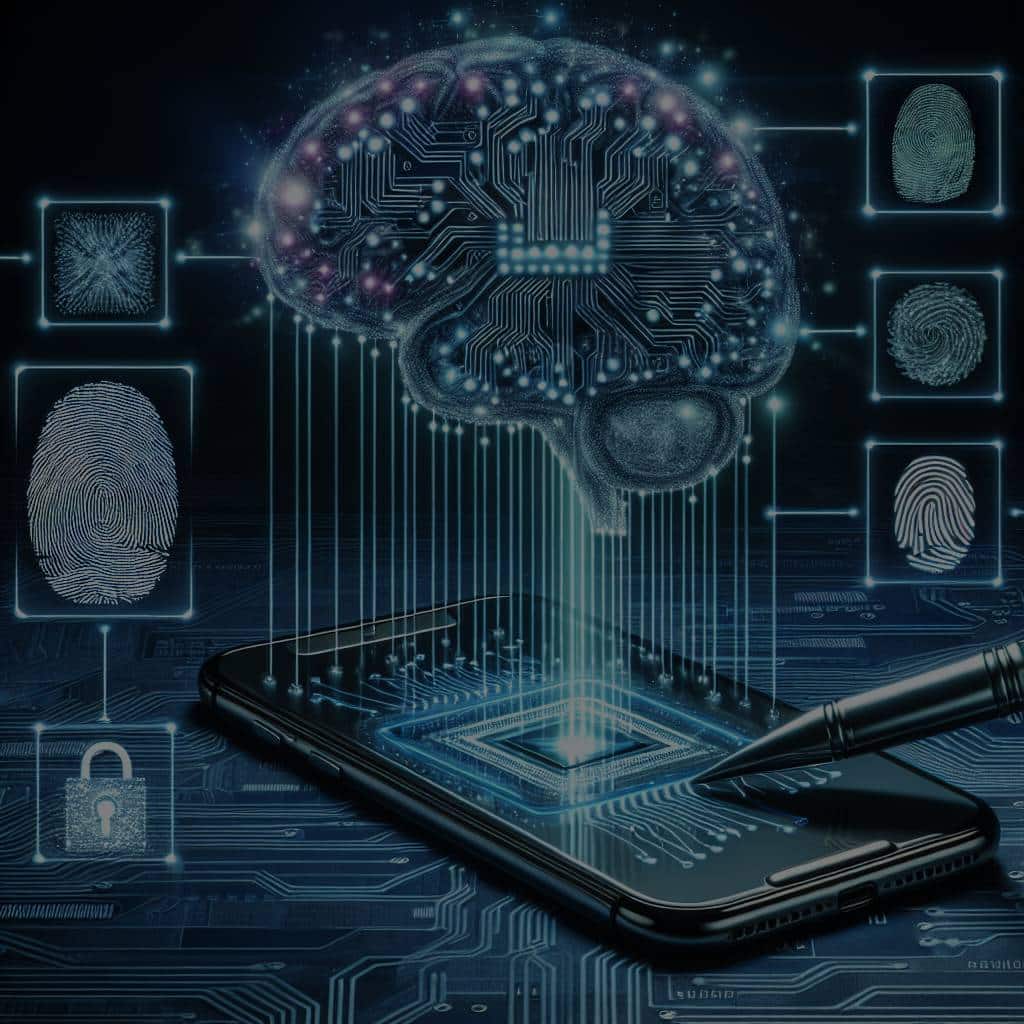Mobile banking has become an integral part of our day-to-day financial activities. From checking account balances, transferring funds, to making payments, you are performing these tasks on the go, thanks to your mobile banking applications. However, the convenience that mobile banking brings to you also attracts malicious entities intending to commit fraud, breach data, and compromise your financial security.
In the wake of such threats, biometric authentication has emerged as a robust measure to enhance the security of mobile banking. And, the advent of Artificial Intelligence has only upped the ante. This article delves into how AI-enhanced biometric authentication can fortify mobile banking security.
Also to read : How Is Augmented Reality Used in Real-Time Machinery Repair and Maintenance?
Understanding the Pillars: Biometrics and Artificial Intelligence
Before delving deeper into the topic, it’s crucial to understand the basic concepts of biometrics and Artificial Intelligence.
Biometrics pertains to the technology that leverages human characteristics–physical or behavioral, for authentication purposes. It includes fingerprints, facial recognition, iris recognition, voice recognition, and more. On the other hand, Artificial Intelligence (AI) is a field of computer science that simulates human intelligence processes by machines.
Have you seen this : Chatbots and IT security: a solution for cybersecurity
When the two technologies intertwine, they create a potent mix. AI enhances the capabilities of biometric systems by improving their accuracy and efficiency, thus bolstering security.
The Role of Biometric Authentication in Mobile Banking
The global banking sector has been quick to adopt biometric technology for user authentication. This is primarily because biometrics offer an extra layer of security and make it more difficult for hackers to gain access to sensitive customer data and commit fraud.
Traditionally, passwords served as the primary form of authentication. But, they are easy to forget, steal, or hack, making them less reliable. Biometric authentication, on the other hand, is based on unique individual traits that are extremely difficult to duplicate or forge.
For instance, banks have introduced fingerprint and facial recognition technology in their mobile applications. Once you enroll your biometrics in the banking system, each time you log in, the system scans your input and matches it against the stored data. If there’s a match, you gain access; if not, access is denied.
How AI Enhances Biometric Authentication in Mobile Banking
Artificial Intelligence takes biometric authentication to the next level by making it more advanced, secure, and user-friendly. Here’s how AI does that:
- Improved Accuracy: AI algorithms can analyze biometric data more accurately. They can identify minute differences and changes that can be missed by the human eye, thereby reducing the chances of false positives and negatives.
- Adaptive Learning: AI systems can learn from their mistakes and improve over time. They constantly update their understanding of your biometrics, making them more resilient to hacking attempts.
- Liveness Detection: AI can help in detecting if the biometric being presented is from a real, living person or a fake. This helps in preventing spoofing attacks where the attacker tries to trick the system with a fake biometric.
- Multi-factor Authentication: AI can combine different biometric traits for authentication. This multi-factor authentication enhances security exponentially.
The Future of AI-Enhanced Biometric Authentication in Mobile Banking
The future of AI-enhanced biometric authentication in mobile banking looks promising. Banks are investing massively in this technology, given its potential to add an extra layer of security and improve the user experience.
One exciting development is behavioral biometrics, where AI analyzes patterns in user behavior like typing style or app navigation habits for authentication. This provides continuous and passive authentication, ensuring security without disrupting the user experience.
Another interesting development is the use of AI for risk-based authentication. Here, the AI system analyzes the risk level of a transaction and decides the level of authentication required. For instance, for a high-risk transaction, the system might require fingerprint and facial recognition.
Conclusion
In conclusion, AI-enhanced biometric authentication has the potential to significantly fortify mobile banking security. While there are challenges to overcome, like ensuring user privacy and dealing with potential biases in AI algorithms, the benefits far outweigh these challenges. As AI continues to evolve, so will the effectiveness of biometric authentication in securing our banking transactions. With banks investing heavily in this technology, the future of mobile banking security indeed seems to be in safe hands.
Integrating AI and Biometric Authentication in Mobile Banking Applications
Banks have been quick to adopt and integrate biometric authentication in their mobile applications to add an extra layer of security. Biometric data like fingerprints, facial recognition, iris recognition, and voice recognition are unique to each individual, making them hard to duplicate, forge, or steal. This has proven to be a significant upgrade from traditional password-based security methods, which can easily be forgotten, stolen, or hacked.
The integration of AI in biometric systems enhances their functionality, making them more efficient and secure. Machine learning algorithms in AI analyze biometric data in real time, identifying minute differences that might be missed by the human eye, thereby reducing the chances of unauthorized access due to false positives or negatives. The system enhances security by learning from its mistakes, constantly updating its understanding of your biometrics to become more resilient against hacking attempts.
AI further fortifies security through liveness detection – a functionality that determines whether the biometric being presented is from a real, living person or a fake, thereby preventing spoofing attacks. It can also combine different biometric traits for multi-factor authentication, enhancing security exponentially.
The Benefits and Challenges of AI-Enhanced Biometric Authentication
While AI-enhanced biometric authentication brings many benefits, it does present a few challenges. One of the main benefits is the improved security it provides. By utilizing unique biometric data, the risk of unauthorized access is significantly reduced. It also enhances the user experience by making the authentication process quicker and more convenient.
Moreover, AI’s adaptive learning capabilities allow the system to improve over time, reducing the chances of false negatives and positives. Its ability to combine different biometric traits for multi-factor authentication also adds an additional layer of security. For instance, using both fingerprint and facial recognition makes it even harder for cyber threats to gain unauthorized access to banking apps.
However, one of the main challenges is ensuring user privacy. As banks collect and store biometric data, they must implement strong data protection measures to prevent the misuse of this sensitive information. There’s also the challenge of dealing with potential biases in AI learning algorithms, which could result in unfair treatment or discrimination.
Additionally, as the technology behind AI-enhanced biometric systems continues to evolve, so does the sophistication of cyber threats. Banks must therefore continually invest in enhancing their security measures to stay ahead of these threats.
Conclusion
Despite the challenges, AI-enhanced biometric authentication offers immense potential for fortifying mobile banking security. As AI and machine learning algorithms continue to evolve, they will only improve the effectiveness of biometric authentication in securing banking transactions. Banks are recognizing this and are investing heavily in adopting this technology in their mobile apps.
While ensuring user privacy and dealing with potential biases in AI algorithms are important concerns, they are surmountable with the right attention and effort. As we move towards a digital future, the integration of AI and biometric authentication in mobile banking is a step in the right direction, promising enhanced security and a better user experience. It’s safe to say that with AI-enhanced biometric authentication, the future of mobile banking security is looking bright.











